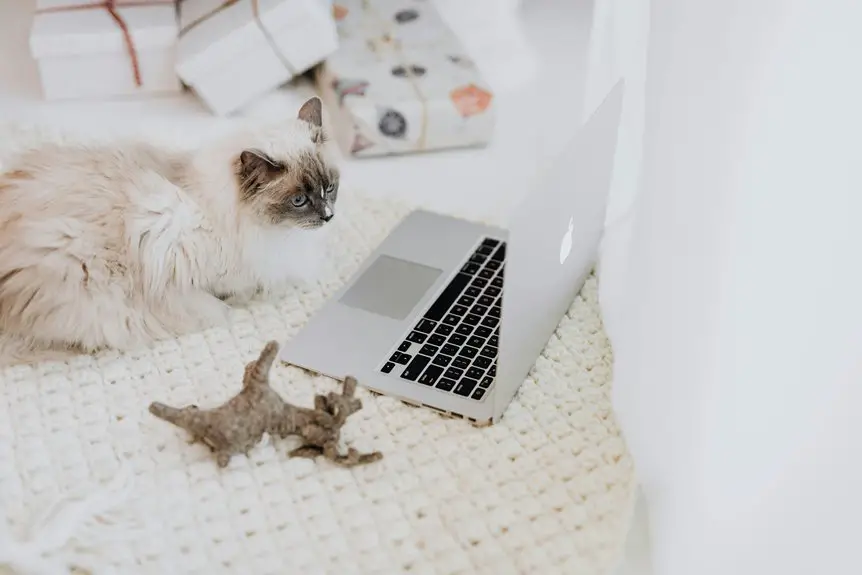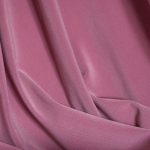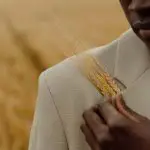Corduroy offers cozy comfort and a durable weave that resists some wear from your pet, but its ribbed texture can snag claws and trap pet hair, making maintenance tricky. It hides minor scratches well but needs frequent vacuuming and gentle cleaning to stay fresh. If you want fabrics that better resist scratches, stains, and pet hair, options like microfiber, denim, or leather might suit you more. Keep exploring to find the best fit for your furry friend’s habits.
Table of Contents
Key Takeaways
- Corduroy is durable and cozy but tends to attract pet hair and is prone to snags from claws.
- Its ribbed texture can hide minor scratches but traps dirt, requiring frequent maintenance.
- Cleaning corduroy can be challenging, especially with embedded fur and stains.
- Microfiber, denim, canvas, and leather are better pet-friendly fabric alternatives due to easy cleaning and scratch resistance.
- Regular pet nail trimming and designated pet areas help protect corduroy and other fabrics from damage.
What Makes a Fabric Pet Friendly?
Although many factors contribute to a fabric’s pet friendliness, durability and ease of cleaning are key. When you choose a fabric, consider how well it withstands scratching, chewing, and general wear from your pets. You’ll want something tough enough to endure daily use without quickly showing damage.
Additionally, cleaning plays a crucial role. Pets shed fur, track dirt, and may have accidents, so you need a fabric that cleans easily and resists stains. Look for materials that don’t trap pet hair or odors and can be spot cleaned or machine washed without losing shape or color.
Breathability and softness also matter to keep your pets comfortable without overheating. Ultimately, a pet-friendly fabric balances resilience and maintenance to keep your home both attractive and practical.
Characteristics of Corduroy Fabric
When selecting a pet-friendly fabric, understanding the unique traits of each material helps you make a better choice.
Corduroy is a distinctive fabric known for its ribbed texture, created by twisted fibers that form parallel ridges called wales. This gives corduroy a soft yet durable feel, making it popular for clothing and upholstery.
Here are some key characteristics to evaluate:
- Durability: Corduroy withstands wear and tear well but can snag on pet claws.
- Texture: Its ridged surface can attract pet hair and dirt more easily than smooth fabrics.
- Maintenance: Cleaning corduroy requires care; it may need gentle washing to avoid damaging its pile.
Knowing these traits helps you decide if corduroy suits your pet-friendly needs.
Pros of Using Corduroy Around Pets
Because corduroy combines durability with a soft texture, you’ll find it offers several benefits for pet owners.
Its sturdy weave resists wear and tear, making it a smart choice if your pets are active or like to climb on furniture. The fabric’s ribbed texture can help hide minor scratches or pet hair better than smooth fabrics, reducing visible mess.
Corduroy is also cozy and comfortable, so your pets will enjoy lounging on it without discomfort. Plus, it’s relatively easy to clean; regular vacuuming or brushing lifts pet hair effectively.
Cons of Using Corduroy Around Pets
You’ll quickly notice that corduroy attracts pet hair, making your furniture look messy.
It’s also prone to snags from claws, which can damage the fabric.
Plus, cleaning corduroy can be tricky, especially when dealing with stains or embedded fur.
Attracts Pet Hair
Although corduroy’s textured surface adds charm, it easily attracts pet hair, making it a challenge to keep clean. If you have a shedding pet, you’ll notice fur clinging stubbornly to the ridges, requiring frequent cleaning.
This fabric’s nap traps hair more than smoother materials, so you’ll need to stay on top of maintenance.
Here’s what you should consider:
- Vacuuming regularly with a brush attachment to remove embedded hair
- Using lint rollers or sticky tape for quick touch-ups
- Washing corduroy upholstery or clothing carefully to avoid damaging its texture
While corduroy looks cozy, the constant battle with pet hair can be frustrating, especially if your pet sheds heavily.
Prone to Snags
One major drawback of corduroy around pets is how easily it snags. Your pet’s claws can catch on the raised ridges, pulling threads and causing visible damage. This not only ruins the fabric’s appearance but can also lead to unraveling over time.
If your furry friend loves to jump on furniture or scratch posts nearby, you’ll likely see wear and tear faster than with smoother fabrics. Unlike flat weaves, corduroy’s texture invites snagging, making it less durable in active pet households.
To keep your furniture looking good, you’ll need to be vigilant about trimming your pet’s nails and possibly avoid corduroy in high-traffic pet areas. Otherwise, expect frequent repairs or replacements due to snag-related damage.
Difficult to Clean
Because corduroy’s textured surface traps dirt, pet hair, and stains more easily than smoother fabrics, cleaning it can become a real challenge.
If you have pets, you’ll notice that regular vacuuming mightn’t be enough to keep your corduroy furniture looking fresh. Stains from accidents or mud require extra effort to remove, as the fabric’s ridges hold onto liquids and grime.
Here’s what you should keep in mind when cleaning corduroy around pets:
- Pet hair embeds deep in the fabric’s grooves, needing frequent brushing or lint rolling.
- Liquid stains soak into the pile, making spot cleaning difficult without damaging the texture.
- Over-washing can wear down the fabric, reducing its lifespan and pet-friendliness.
Knowing this helps you decide if corduroy suits your pet-friendly home.
How Pets Affect Upholstery Fabrics
When your pet spends time on upholstered furniture, their claws, fur, and oils can quickly impact the fabric’s appearance and durability. Scratches may weaken fibers, while shedding fur sticks to textured surfaces like corduroy. Natural oils from your pet’s skin can cause stains or darken fabric over time. Understanding how pets affect different fabrics helps you choose and maintain furniture better.
| Pet Impact | Effect on Fabric | Common Fabrics Affected |
|---|---|---|
| Claw Snags | Tears, fraying | Corduroy, velvet |
| Fur Shedding | Stuck fur, allergens | Wool, microfiber |
| Skin Oils | Stains, discoloring | Cotton, linen |
| Dirt Transfer | Staining, soiling | Light-colored fabrics |
| Odor Retention | Lingering smells | Synthetic blends |
Best Fabric Alternatives for Pet Owners
You need fabrics that stand up to your pet’s wear and tear without constant worry.
Look for durable, pet-friendly materials that resist scratches and stains.
Choosing easy-to-clean options will save you time and keep your space looking fresh.
Durable Pet-Friendly Fabrics
Although corduroy has its charm, you might want to explore other durable pet-friendly fabrics that stand up better to claws and fur.
Choosing the right material helps protect your furniture and keeps your home looking great despite your pet’s antics. Here are some top durable options to evaluate:
- Microfiber: Known for its tight weave, it resists scratches and repels pet hair, making cleanup easier.
- Denim: Strong and tough, denim can handle rough use and hides wear well.
- Canvas: Heavy-duty and resistant to tears, canvas offers excellent durability and a casual look.
Easy-to-Clean Material Options
Since pets can leave fur, stains, and odors behind, choosing easy-to-clean fabrics makes life much simpler. You’ll want materials that resist stains and wipe down quickly.
Leather and faux leather are excellent choices—they don’t trap pet hair and clean easily with a damp cloth. Microfiber is another great option; its tight weave prevents dirt from embedding and it’s machine washable.
Consider canvas, too, since it’s durable and can often be spot-cleaned or laundered. Avoid fabrics like corduroy that attract fur and are harder to clean.
When shopping, look for fabrics labeled as stain-resistant or pet-friendly. By selecting easy-to-clean materials, you’ll save time and keep your furniture looking fresh, even with pets around.
Tips for Protecting Furniture From Pet Damage
When pets share your home, protecting your furniture from scratches, stains, and wear becomes essential. You can keep your pieces looking great by taking a few proactive steps.
First, use washable slipcovers or throws to shield your upholstery from fur and dirt. Next, trim your pet’s nails regularly to reduce the risk of scratches. Finally, provide your pets with designated areas, like cozy beds or mats, to discourage them from jumping on furniture.
- Place scratching posts or pads near favorite furniture spots to redirect your pet’s scratching behavior.
- Use pet-safe repellents on vulnerable areas to deter unwanted climbing or chewing.
- Keep toys handy to distract your pets and reduce boredom-driven damage.
These tips help maintain your furniture’s condition while keeping your pets happy.
Cleaning and Maintenance for Pet-Friendly Fabrics
Protecting your furniture from pet damage sets a strong foundation, but regular cleaning and proper maintenance keep pet-friendly fabrics looking their best over time.
You should vacuum fabric surfaces frequently to remove pet hair and dirt before they embed deeply. For spot cleaning, use pet-safe, gentle detergents and test on a hidden area first. Avoid harsh chemicals that can damage fibers or irritate your pet.
Corduroy, for example, benefits from brushing with a soft brush to maintain its texture and prevent matting. Promptly address stains and odors to prevent lasting damage.
Rotating cushions and using washable covers can also extend fabric life. By staying consistent with cleaning routines, you’ll keep your furniture fresh and inviting despite your pet’s presence.
Choosing the Right Fabric Based on Your Pet’s Behavior
Understanding your pet’s habits can help you choose the right fabric that withstands wear and tear. If your furry friend loves to scratch or dig, you’ll want a durable, tightly woven fabric that resists damage.
For pets prone to shedding, pick fabrics that don’t trap hair easily, making cleaning simpler. If your pet is frequently outdoors and tracks dirt inside, opt for materials that are stain-resistant and easy to wash.
Consider these points when selecting fabric:
- Scratch resistance: Choose sturdy textiles like microfiber or canvas if your pet scratches often.
- Hair attraction: Go for smooth weaves like leather or corduroy alternatives to minimize hair cling.
- Cleanability: Select fabrics that handle frequent washing and resist stains for active pets.
Tailor your choice to your pet’s specific behavior for a lasting, pet-friendly home.
Frequently Asked Questions
Can Corduroy Fabric Cause Allergies in Pets?
Corduroy fabric itself usually won’t cause allergies in pets, but its texture can trap pet dander and dust, which might irritate sensitive animals. You should watch your pet’s reaction and keep the fabric clean to avoid issues.
Is Corduroy Safe for Puppies to Chew On?
You want safety and comfort; puppies want to chew and explore. Corduroy isn’t toxic but can pose choking hazards if shredded. Avoid letting your puppy chew it to keep them safe and your fabric intact.
How Does Corduroy Fabric Affect Pet Hair Shedding?
Corduroy tends to attract and trap pet hair due to its textured ridges, making shedding more noticeable. You’ll need to clean it frequently with a lint roller or vacuum to keep your space hair-free and tidy.
Are There Specific Corduroy Colors Better for Hiding Pet Stains?
Imagine a canvas where shadows dance—darker corduroy shades like deep browns or charcoals hide pet stains best. You’ll find these colors cleverly mask spills and fur, keeping your fabric looking fresh and vibrant longer.
Can Corduroy Fabric Help Reduce Pet Odors in the Home?
You won’t find corduroy effective at reducing pet odors since it absorbs smells easily. Instead, opt for fabrics with moisture-resistant or antimicrobial finishes that help keep your home smelling fresh despite your pets.
- Sewing Corduroy: A Complete Guide for Fabric Enthusiasts - July 4, 2025
- Unshrink Corduroy Pants: Effective Methods to Restore Fit - July 4, 2025
- Stylish Outfit Ideas: What to Wear With Cream Corduroy Pants - July 4, 2025






